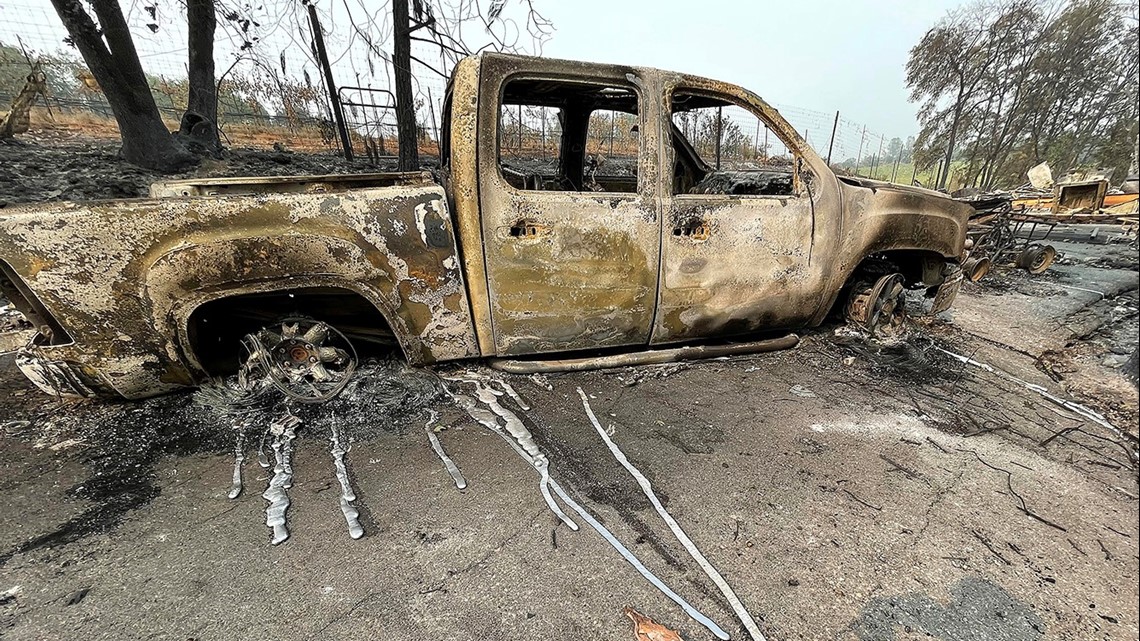

“This Dixie fire is one fire, so it’s not a complex of multiple fires,” said Tim Phelps, an incident spokesman for the Dixie fire. This fire, on the other hand, merged only with one smaller blaze to form a singular inferno. That blaze was composed of more than 30 smaller fires that ignited after an unusually fierce lightning storm in Northern California. In fact, six of the 10 largest fires in the state’s history have burned in the last two years, according to the California Department of Forestry and Fire Protection.Īnd in many ways, the Dixie fire was more fearsome than the August Complex. The Dixie fire also confirmed that the August Complex was not the anomaly many hoped it would be. And that vulnerability is really hard to deal with.” “It’s a really scary confirmation of the extensiveness of the fuel buildup,” Field said, “and that basically we’re in an era now where any place you drop a match or a burning ember, you get a new fire. When that drought-dried vegetation met with embers from the Dixie fire, it easily ignited, enabling the blaze to “carve its own path like a glacier.” “Basically, this fire jumped over everything that we would have considered a traditional defensible fire line.”įield attributed a few factors to the Dixie fire’s growth - most critically, the century of fire suppression that enabled vegetation to pile up in the state’s forests. “The Dixie fire is the final, nail-in-the-coffin piece of evidence that traditional firefighting methods are not up to the challenge of the kind of wildfires we get in the 2020s,” said Chris Field, director of Stanford University’s Woods Institute for the Environment. It also amplified the urgent need for more proactive measures to prevent similarly massive fires. Many experts said the speed and scale of the Dixie fire’s spread sent a clear message about the toll extreme heat and drought are having on California’s overgrown landscape. PG&E reported the information to the California Public Utilities Commission, noting that blown fuses and a tree may have contributed to the Dixie fire. This story originally appeared in Los Angeles Times.California PG&E equipment may have sparked Dixie fire, growing near burn scar of deadly Camp fire "That's not going to change, no matter what happens, until we're done with this," he added. Some of the lower elevations in the fire area will see temperatures as high as 100 degrees on Labor Day.Ĭarlton, the forest supervisor, said firefighters and first responders are "working as hard as they can, day and night, to put this fire out." " moves fairly quickly even when there's no wind on it because it's so dry," Surber said. The two fires this month became the first to burn from one side of the Sierra to the other.Īnd even though some of the strong winds that fanned the Dixie fire earlier this week are dissipating, officials said other factors like heat and dryness will continue to pose challenges. More than 15,000 personnel are fighting the fires, including the Dixie fire and the 212,000-acre Caldor fire just south of the blaze. More than 1.9 million acres have burned this year. The Dixie fire is one of 16 large wildfires actively burning across the state, the California Department of Forestry and Fire Protection said. "There's a strong chance that water will not be potable, and there could even be a no-boil use recommendation, which means that you can't even use the water to brush your teeth," he said, adding that there is "very little to no infrastructure" in the area.Īn unsafe water alert was issued in the area Friday. But Plumas County Sheriff Todd Johns told residents to brace for hazards as they make their return - particularly in the Greenville area, which was leveled by fire. Some evacuation orders and warnings were downgraded or lifted on the fire's less active side this week, and more repopulation is anticipated in the days to come. Nearly 13,000 structures are still threatened by the fire, and more than 1,200 have already been destroyed. New evacuation orders were issued in the Milford and Herlong areas this week.
/cloudfront-us-east-1.images.arcpublishing.com/gray/K42LA5UUANF27AES6T4KGFAANE.png)
"Our top priority is to deal with what's up on top of the rim and try to prevent the fire spread from coming down and impacting that 395 corridor," operations section chief Jeff Surber said Friday. Officials said much of the focus heading into the weekend will be on keeping flames from spreading into Dixie Valley and Milford along Highway 395. That side of the fire has been significantly contained, officials said Friday.īut the eastern edge of the fire is still active and hot.

Crews have made great gains on the back end of the fire, near where it ignited July 13 after a downed tree met with PG&E equipment and sent sparks flying.


 0 kommentar(er)
0 kommentar(er)
